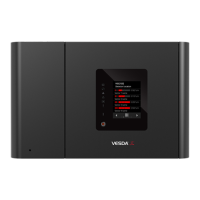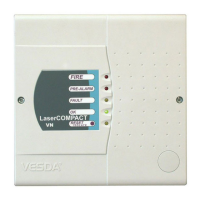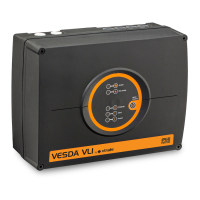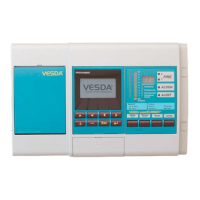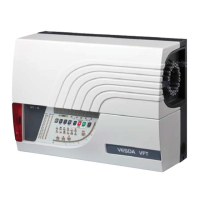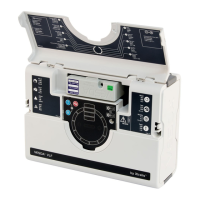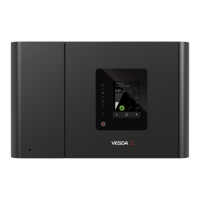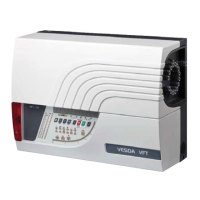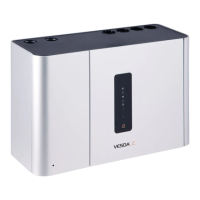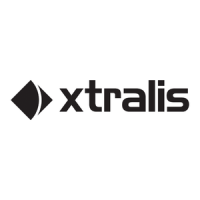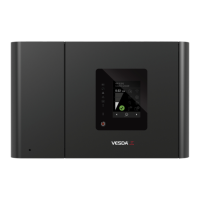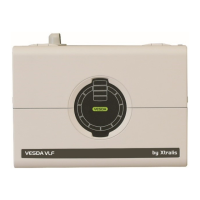
 Loading...
Loading...
Do you have a question about the Xtralis vesda LaserFOCUS VLF-500 and is the answer not in the manual?
| Brand | Xtralis |
|---|---|
| Model | vesda LaserFOCUS VLF-500 |
| Category | Smoke Alarm |
| Language | English |
Details the content covered in this manual, including features, installation, and operation of the VESDA LaserFOCUS.
Overview of the VESDA LaserFOCUS as an early warning laser-based aspirated smoke detection technology.
Provides essential safety warnings and notifications for installation and maintenance of the detector.
Technical drawings and measurements for the VESDA LaserFOCUS detector and its mounting bracket.
Guidance on detector mounting orientation and initial installation steps.
Step-by-step instructions for fitting the mounting bracket and securing the detector.
Procedure for inverting the detector's user interface display for specific mounting orientations.
Instructions on how to safely remove the VESDA LaserFOCUS detector from its mounting bracket.
Details on connecting the air inlet sampling pipe to the detector.
Guidance on connecting the exhaust sampling pipe, considering pressure balance.
General information and requirements for wiring the VESDA LaserFOCUS detector.
Specifications for wire sizes accepted by the detector's screw terminals.
Configuration and wiring details for the programmable General Purpose Input terminals.
Information on spare terminals and power supply connections (Terminals 8-11).
Description of relay connections (Terminals 12-20) for alarm and fault signaling.
Wiring diagrams for connecting to Fire Alarm Control Panels and Address Loop Modules.
Details on installing interface cards and using the RS232 serial port for configuration.
A checklist to verify all installation steps are completed before commissioning the detector.
Overview of pre-engineered pipe network designs, constraints, and performance parameters.
Guidelines for hole sizes and lengths for single pipe sampling network configurations.
Hole size and length specifications for branched pipe sampling network designs.
Considerations for air sampling using return grilles, including coverage and hole placement.
Key points for installing sampling pipes to ensure optimal performance and maintainability.
Reference to design manual for air sampling within ducts.
Introduction to commissioning, AutoLearn functions, and pre-commissioning checks.
Process for automatically setting alarm thresholds based on environmental conditions.
Procedure for setting airflow thresholds and normalizing detector airflow.
Using the VSC software for configuring detector parameters and settings.
Steps for performing a smoke test to verify pipe network integrity and transport time.
Summary of key features and a description of the detector's primary display functions.
Common use cases and environments for the VESDA LaserFOCUS detector.
Overview of information and control options available directly on the detector.
Diagram identifying key components and ports visible on the detector's front.
Explanation of the display indicators for smoke levels, alarms, and status.
How to access and understand the detector's control buttons and indicators.
Detailed functions of the Reset, Disable, and Test control buttons.
How the Smoke Dial indicates smoke levels and fault conditions using Instant Fault Finder.
Guide to diagnosing faults using the Instant Fault Finder function and fault diagnosis table.
Default parameter settings for smoke thresholds, airflow, and AutoLearn.
Detailed technical specifications including power, dimensions, operating conditions, and sampling network.
Specifications for field wiring, interfaces, alarm ranges, and display indicators.
Details on event logging capacity and available product order numbers.
Summary of detector self-monitoring and serviceable items like the air filter and aspirator.
Recommended maintenance actions, frequencies, and details for optimal performance.
Procedure for replacing the disposable dual-stage air filter cartridge.
Instructions for removing and replacing the detector's aspirator unit.
Standard form for recording site, installer, and test witness details during commissioning.
Forms for documenting detector configuration, relay settings, and interface card details.
Forms for recording ASPIRE2 data and smoke test results.
Form used to document air sampling test results for pipe branches.
Definitions of technical terms and acronyms used throughout the manual.
Answers to common inquiries regarding detector operation, AutoLearn, and troubleshooting.
